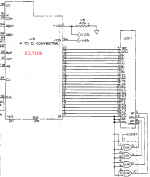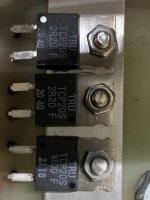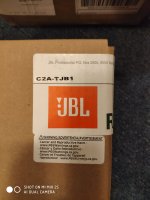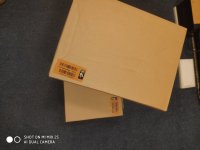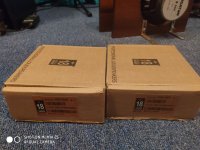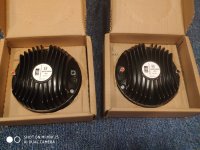Hello DIY Audio Community,
I'm in the process of designing a
stereo hybrid headphone amplifier that leverages the rich tonal qualities of a tube stage combined with the robust performance of solid-state MOSFETs. The goal is to achieve
at least 1W per channel into 32Ω headphones and
300mW per channel into 300Ω headphones. I'm seeking your expert insights and suggestions to refine this design.
I'm using
KiCad for schematic capture and PCB design, and plan to have the assembled prototype tested by a certified electrician for safety compliance.
---
###
Project Overview
The amplifier is intended to deliver
at least 1W per channel into 32Ω headphones and
300mW per channel into 300Ω headphones. The design emphasizes simplicity by minimizing components in the signal path to preserve the tube’s sonic character while ensuring reliable performance across various headphone impedances.
---
###
Design Specifications
Code:
+----------------------------+----------------------------------------------+
| Specification | Details |
+----------------------------+----------------------------------------------+
| Amplifier Type | Hybrid (Tube + MOSFET) |
| Tube Used | Tung-Sol 12AU7 (Dual Triode) |
| MOSFETs Used | IRLZ44N N-Channel MOSFETs |
| Power Output | ≥1W/channel into 32Ω; ≥300mW/channel into 300Ω |
| Power Supply | AnTek AS-1T150 Transformer |
| PCB Design Software | KiCad |
| Chassis | WHAMMY Case (80mm H x 210mm W x 230mm D) |
| Volume Control | Single Blue Velvet 10kΩ Audio-Taper Potentiometer |
| Testing | To be conducted by a certified electrician |
+----------------------------+----------------------------------------------+
---
###
Bill of Materials (BOM)
####
1. Tube Stage Components
Code:
+------------------------------+---------------------------------------------+----------+--------------------------------------------+
| Component | Specification | Quantity | Description/Notes |
+------------------------------+---------------------------------------------+----------+--------------------------------------------+
| 12AU7 Tube | Tung-Sol 12AU7 (Dual Triode) | 1 | High-quality audio tube |
| Tube Sockets | 5-Pin Ceramic Tube Sockets | 2 | One per triode channel |
| Cathode Resistor (Rk) | 100Ω, 1W, Metal Film | 1 | Sets baseline cathode bias |
| Cathode Bias Potentiometer | 1kΩ, 1W, Audio-Taper (Blue Velvet) | 1 | Single potentiometer for both channels |
| Decoupling Capacitors (Ck) | 0.1µF, Ceramic | 2 | One per channel; stabilizes bias voltage |
| Grid Resistors | 1MΩ, Metal Film | 2 | Connects RCA inputs to tube grids |
| Coupling Capacitors | 10µF, 400V, Film (e.g., Panasonic EEFUE0G101R)| 2 | Blocks DC; allows AC audio signal to pass to MOSFET gates|
| Stability Capacitors | 100pF, Ceramic | 2 | From MOSFET gate to source for high-frequency damping|
+------------------------------+---------------------------------------------+----------+--------------------------------------------+
####
2. MOSFET Follower Stage Components
Code:
+------------------------------+---------------------------------------------+----------+--------------------------------------------+
| Component | Specification | Quantity | Description/Notes |
+------------------------------+---------------------------------------------+----------+--------------------------------------------+
| IRLZ44N MOSFETs | N-Channel, Logic-Level | 2 | One per channel; consider heatsinks if necessary|
| Gate Resistors | 10kΩ, 1/4W, Metal Film | 2 | One per MOSFET gate for stability |
| Source Resistors (Rs) | 1.7Ω, 10W, Wirewound | 2 | Handles current buffering; ensures low impedance output|
| Output Capacitors | 100µF, 50V, Film (e.g., Nichicon UFW100C) | 2 | DC blocking at headphone outputs; non-polarized film capacitors|
| Heatsinks for MOSFETs | Suitable for IRLZ44N (e.g., Velleman AN20) | 2 | Ensure proper thermal management |
+------------------------------+---------------------------------------------+----------+--------------------------------------------+
####
3. Power Supply Components
#####
A. High-Voltage B+ Supply
Code:
+------------------------------+---------------------------------------------+----------+--------------------------------------------+
| Component | Specification | Quantity | Description/Notes |
+------------------------------+---------------------------------------------+----------+--------------------------------------------+
| Transformer | AnTek AS-1T150 | 1 | Provides 150V AC @ 0.33A and 6.3V AC @ 3A |
| Rectifier Diodes | 1N4007 | 4 | Full-wave bridge rectifier for B+ supply |
| Filter Capacitors | 220µF, 250V, Electrolytic (e.g., Nichicon UG2J221MPD) | 2 | Smoothes B+ DC supply |
+------------------------------+---------------------------------------------+----------+--------------------------------------------+
#####
B. MOSFET Supply (Voltage Doubler)
Code:
+------------------------------+---------------------------------------------+----------+--------------------------------------------+
| Component | Specification | Quantity | Description/Notes |
+------------------------------+---------------------------------------------+----------+--------------------------------------------+
| Schottky Diodes | 1N5819 | 2 | Voltage doubler configuration; low forward voltage drop|
| Electrolytic Capacitors | 1000µF, 25V, Electrolytic (e.g., Panasonic EEU-FC1C100) | 2 | Filter capacitors for voltage doubler |
+------------------------------+---------------------------------------------+----------+--------------------------------------------+
####
4. Signal Path and Control Components
Code:
+------------------------------+---------------------------------------------+----------+--------------------------------------------+
| Component | Specification | Quantity | Description/Notes |
+------------------------------+---------------------------------------------+----------+--------------------------------------------+
| Volume Potentiometer | Blue Velvet, 10kΩ, Audio-Taper | 1 | Controls overall volume before tube stage |
| RCA Input Jacks | Shielded, Mono | 2 | One per channel; high-quality for audio fidelity|
| Headphone Output Jack | 3.5mm Stereo, Gold-Plated | 1 | High-quality, gold-plated recommended |
+------------------------------+---------------------------------------------+----------+--------------------------------------------+
####
5. Grounding and Protection Components
Code:
+------------------------------+---------------------------------------------+----------+--------------------------------------------+
| Component | Specification | Quantity | Description/Notes |
+------------------------------+---------------------------------------------+----------+--------------------------------------------+
| Fuses | 1A Slow-Blow, 250mA Slow-Blow, 500mA | 3 | Protects AC input, B+ supply, and low-voltage DC|
| Star Ground Bus | Bus bar or Heavy Gauge Wire | 1 | Central ground point to minimize ground loops|
| TVS Diodes | Suitable for AC Mains Protection | 2 | Protects against voltage spikes |
+------------------------------+---------------------------------------------+----------+--------------------------------------------+
####
6. Chassis and Mounting Components
Code:
+------------------------------+---------------------------------------------+----------+--------------------------------------------+
| Component | Specification | Quantity | Description/Notes |
+------------------------------+---------------------------------------------+----------+--------------------------------------------+
| Chassis | WHAMMY Case, 80mm (H) x 210mm (W) x 230mm (D) | 1 | Accommodates all components; ensure proper ventilation|
| Mounting Hardware | Screws, Standoffs, Thermal Paste for Heatsinks | As Needed | Secure components within the chassis |
| On/Off Switch | SPST, Rated for AC Mains | 1 | Controls power to the amplifier |
| Fuse Holders | Inline Holders for Respective Fuses | 3 | Mounts for 1A, 250mA, and 500mA fuses |
+------------------------------+---------------------------------------------+----------+--------------------------------------------+
####
7. PCB and Miscellaneous Components
Code:
+------------------------------+---------------------------------------------+----------+--------------------------------------------+
| Component | Specification | Quantity | Description/Notes |
+------------------------------+---------------------------------------------+----------+--------------------------------------------+
| PCB | 2-Layer, Custom-Designed | 1 | Designed in KiCad; ensure high-voltage isolation|
| Connectors | Screw Terminals for Transformer Connections | 1 Set | Facilitates power connections to PCB |
| Wires and Cables | Various Gauges, Shielded for Audio | As Needed | High-quality for signal paths; proper gauge for power|
| Thermal Vias | For Heatsink PCB Areas | As Needed | Enhances thermal management on PCB |
| Mounting Hardware | Screws, Standoffs, Spacers | As Needed | For PCB and component mounting within chassis|
+------------------------------+---------------------------------------------+----------+--------------------------------------------+
---
###
Seeking Your Expertise
I would greatly appreciate feedback on the following aspects of the design:
1.
Component Selection:
- Are the chosen components optimal for the intended performance and reliability?
- Suggestions for higher-quality alternatives, especially for critical components like capacitors and resistors?
2.
Circuit Design:
- Any improvements or modifications to the tube stage or MOSFET buffer for better performance or stability?
- Recommendations for additional filtering or decoupling to enhance audio fidelity?
3.
PCB Layout:
- Best practices for minimizing noise and interference in a hybrid tube-MOSFET design?
- Tips for effective thermal management on a 2-layer PCB?
4.
Safety Considerations:
- Additional safety features or precautions that should be incorporated?
- Suggestions for ensuring reliable isolation between high-voltage and low-voltage sections?
5.
Overall Design:
- Any potential oversights or areas that could benefit from further optimization?
- Advice on achieving the best balance between simplicity and performance?
---
Thank you in advance for your valuable insights and suggestions!
Looking forward to your feedback to refine and enhance this amplifier design.







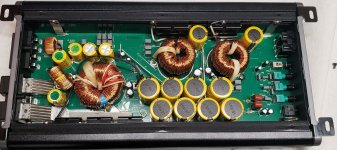
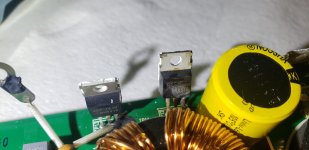
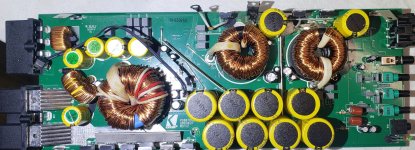
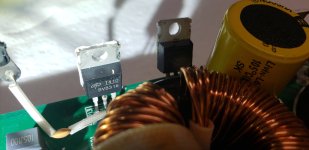











![IMG_20230331_201509[2].jpg](/community/data/attachments/1067/1067643-86bcdc9b22b639fe7673cb312d5fe213.jpg?hash=hrzcmyK2Of)
![IMG_20230330_075028[1].jpg](/community/data/attachments/1067/1067644-6463a22215607b21b48eb3fed8160f86.jpg?hash=ZGOiIhVgey)

